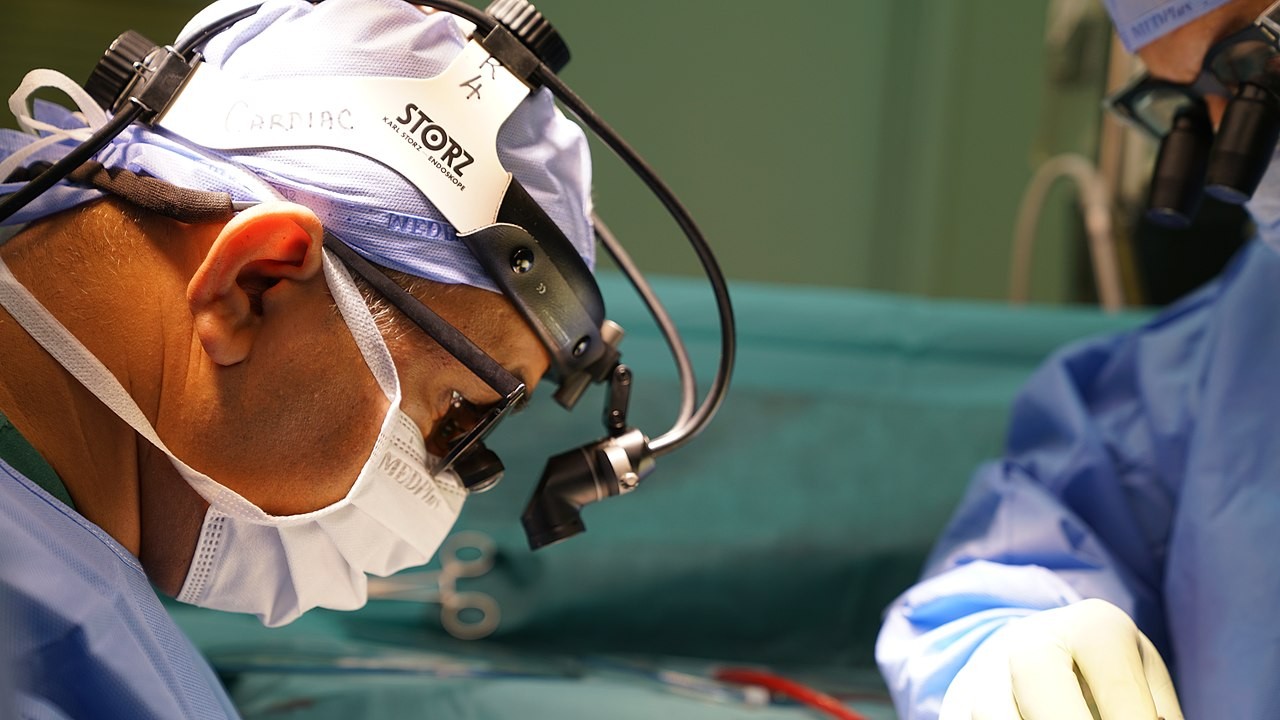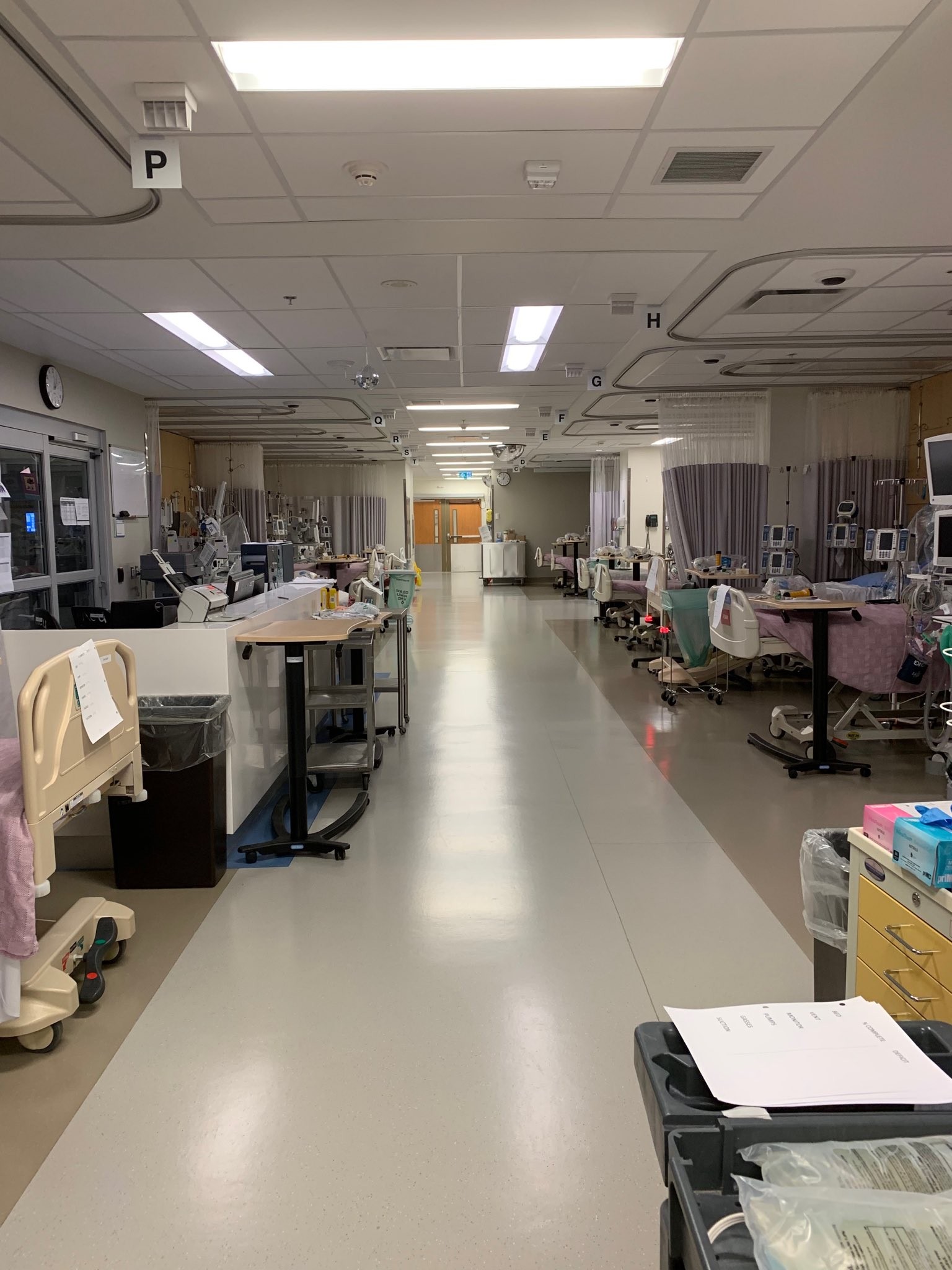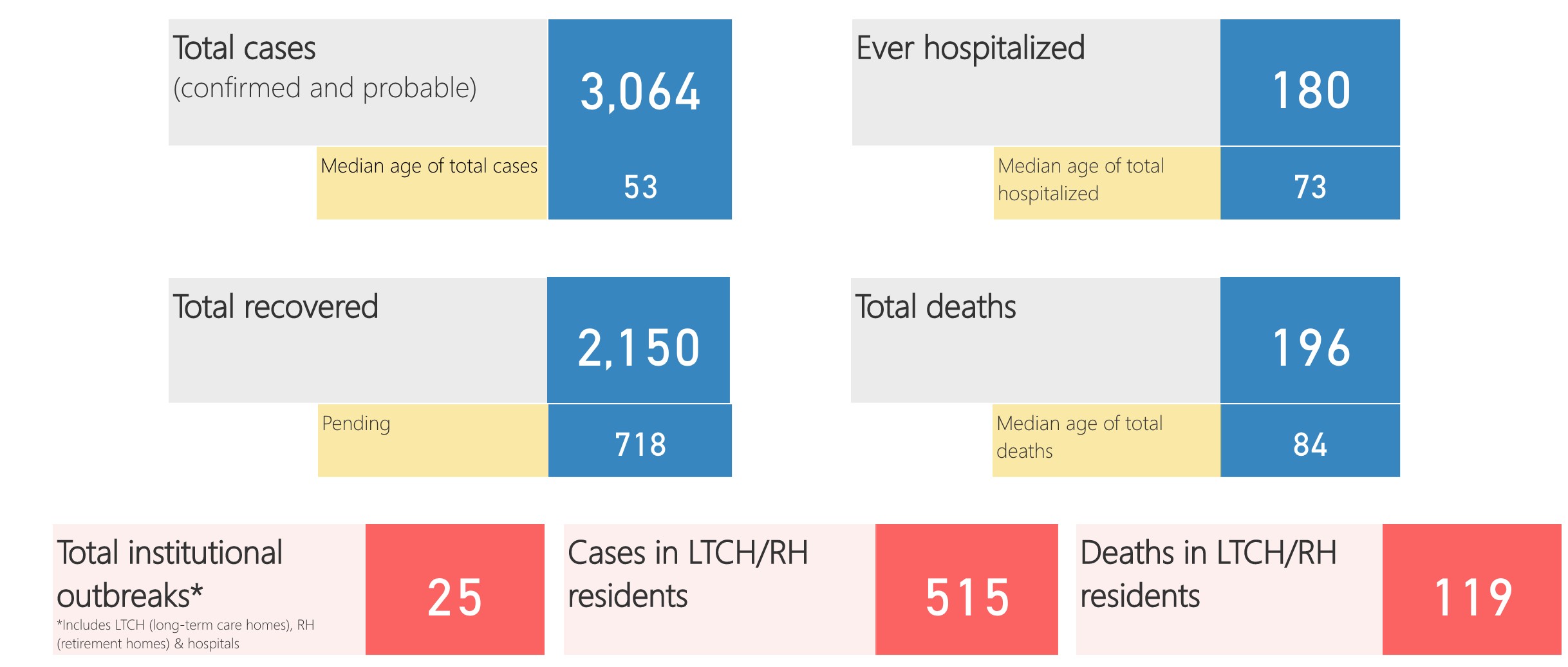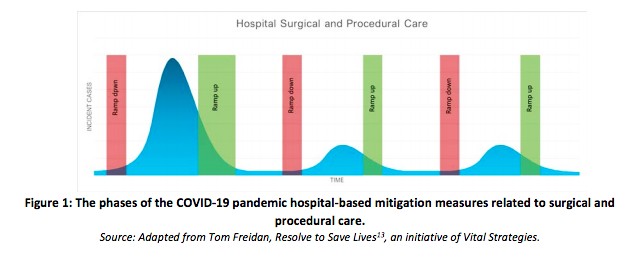
Cancer patients and others in agonizing pain in limbo as hospitals plan to restart elective surgeries
COVID-19 has hit the pause button on our lives.
Vacations, sports, concerts and weddings, all these plans have been sacrificed. While most cancellations are nothing more than an inconvenience, some things can’t be put off for too long.
Throughout the pandemic thousands of Canadians have been dealing with a myriad of medical conditions, many of them serious. A pause in surgical procedures has allowed medical practitioners to expand capacity to deal with COVID-19.

The ramping down of elective surgeries has allowed hospitals, like those operated by the Trillium Health Partners (above), to expand the amount of space available for COVID-19 patients.
Yet, hips that need to be replaced are still causing excruciating pain, organs that need fixing present possible complications and cancers in many patients continue to metastasize. As hospitals wage war against the novel coronavirus these maladies do not take a break, they only get worse.
The reduction in elective surgeries has been quite significant across the province. According to numbers from Ontario Health, from when hospitals began ramping down procedures in mid-March, to the end of April, there have been 2,039 fewer adult cancer surgeries, a reduction of 34 percent from the same period in 2019, 1,033 fewer adult vascular surgeries (a 73 percent reduction), 609 fewer cardiac surgeries (44 percent reduction), 62,614 fewer adult non-oncology surgeries and 6,097 fewer paediatric surgeries (a 93 percent reduction in both categories).
“To someone waiting for a surgery nothing is more important. This has weighed heavily on all of us and I want more than anything to get these surgeries and procedures back on track as soon as possible,” Premier Doug Ford said last week. “Help is on the way.” But it could take a while to get there, for some.
For now, only those non-COVID cases deemed life-threatening get attention. According to the province, an elective surgery is when “the acuity of the condition being treated surgically allows for the patient and their health care provider to elect the timing and scheduling of surgery without negative impact on the surgical outcome or disease process”. This somewhat vague description, open to different interpretations, makes dealing with a painful condition seem like scheduling a play date. Many have been left to deal with their pain and suffering on their own.
Whenever elective procedures are allowed to start, the province says priority for which surgeries move forward will be based on a number of criteria, including: patient factors (e.g., their condition, comorbidities which are underlying medical problems exacerbating their particular situation); disease factors (e.g., are there non-operative treatment options, risk of surgery delay); procedure factors (e.g., inpatient vs. outpatient or day procedures, operating room time, length of stay, anticipated blood loss, intubation probability); use of resources (e.g., PPE, medications, ICU and other postoperative care needs); and COVID-19 exposure/virus transmission risk.
“For example, a hospital may choose to begin with outpatient procedures, followed by day surgeries, followed by inpatient surgeries as resources become available. By taking this stepwise approach, hospitals can ensure there are appropriate measures in place to increase surgery and procedures safely and minimize risk to health care workers and patients,” provincial documents state.
The current delays could soon change. Ford and Health Minister Christine Elliott last week laid out a framework for how hospitals can start providing elective surgeries again, once they get the green light, which could be soon, if the spread and severity of COVID-19 continues to trend in the right direction.
Similar to the province’s plan to ease physical distancing restrictions which began last week, the “comprehensive framework” is big on guidelines and short on specific timelines.
“It’s designed to help hospitals take an equitable, measured and responsible approach that prioritizes the health, wellbeing and safety of patients and healthcare workers,” Elliott said during a press conference.
The framework provides a number of benchmarks that each hospital needs to meet before considering procedures not associated with the viral disease. Because the situation at each hospital is different, with some dealing with much higher COVID-19-patient loads and infection outbreaks, the timelines for starting elective procedures will vary.
Under the criteria set out by Ontario Health, hospitals will need to eliminate much of the uncertainty caused by the disease spread. COVID-19 cases need to stabilize inside the hospital, and each needs to ensure it has an adequate supply of not only personal protective equipment and medications, but also capacity of inpatient and intensive care beds, as well as the availability of post-acute care outside the hospital to support patients after they have been discharged. If a hospital is able to check all those boxes, they are allowed to start offering non-COVID procedures.
For patients in Peel’s two big cities, they may have more waiting to do.
Both Trillium Health Partners which runs Mississauga’s hospitals and the William Osler Health System that manages Brampton’s facilities have made it clear they are still reviewing the criteria for the reintroduction of these procedures, and no firm timelines have been established yet.
According to Donna Harris, a spokesperson for Osler, work on “initial plans” to resume scheduled procedures is underway, but a timeline is not available. Osler did not comment on its current levels of PPE, medical supplies or hospitals beds.
A similar response was received from Trillium.
“Before any activity resumes, we need to ensure it is safe to do so. Trillium Health Partners is actively reviewing the guidance issued by the province and, with our partners, will carefully plan a resumption of postponed surgeries and procedures in a way that best protects patients, staff and the community,” THP spokesperson Keeley Rogers said. “We are committed to keeping our community updated and will share more information as it becomes available.”
As of May 9, 1,241 people had received positive COVID-19 tests at THP hospitals, and the health system had 94 patients being cared for in in-patient beds and 22 in critical care at its hospitals. For William Osler, 2,568 people have received positive tests at its facilities and there are currently 83 patients being treated for the coronavirus at its hospitals, including Etobicoke General, 16 of them in critical care. Osler is also dealing with a pair of COVID-19 outbreaks in its facilities, one on the 9th Level of Etobicoke General hospital and another at the Reactivation Care Centre in York. Until these outbreaks and new cases begin to dissipate, the chances of Trillium or Osler offering elective surgeries remains low.
It could be a while before relief arrives in Brampton and Mississauga. While the rate of new cases in the region appears to have peaked about three weeks ago — increasing roughly by between 1 and 3 percent daily, on average, over the last two weeks, compared to increases of 5 to 7 percent daily, on average, three to four weeks ago — there are still new cases arriving at local hospitals, and the spread of the disease through Peel’s long-term care sector continues to create a strain for local healthcare providers, as many of these elderly patients have to be transferred to hospitals.
As of May 10, there were just over 3,000 probable and confirmed cases of COVID-19 in Peel, and nearly 200 deaths. Over 500 of the region’s cases are in local retirement and long-term care homes and 119 people have already lost their lives in these facilities. Until these numbers begin to recede, there will be a continued need for hospitals to ensure they have adequate capacity for dealing with COVID patients.

A breakdown of COVID-19 cases in the Region of Peel as of May 11.
According to the provincial plan, hospitals should be operating at no more than about 85 percent capacity before considering elective surgeries again. The 85 percent benchmark could not be met by overcrowded Peel hospitals before COVID-19 ratcheted up the pressure (Brampton Civic operated between 101 and 106 percent capacity for most of last year, while Peel Memorial, which does not offer in-patient care, was at more than 500 percent capacity) so, presumably, it will be difficult for local hospitals to find the capacity for elective surgeries until COVID-19 becomes a distant memory.
Even when these procedures begin again, if any COVID-related risk returns, elective surgeries may have to be pushed to the back burner.
The province has also made it clear that while the current wave of COVID-19 appears to have peaked, allowing elective procedures to ramp up again, a second or even a third wave of the virus over the next year is expected that could force procedures to be postponed again.

Email: [email protected]
Twitter: @JoeljWittnebel
COVID-19 is impacting all Canadians. At a time when vital public information is needed by everyone, The Pointer has taken down our paywall on all stories relating to the pandemic to ensure every resident of Brampton and Mississauga has access to the facts. For those who are able, we encourage you to consider a subscription. This will help us report on important public interest issues the community needs to know about now more than ever. You can register for a 30-day free trial HERE. Thereafter, The Pointer will charge $10 a month and you can cancel any time right on the website. Thank you.
Submit a correction about this story


